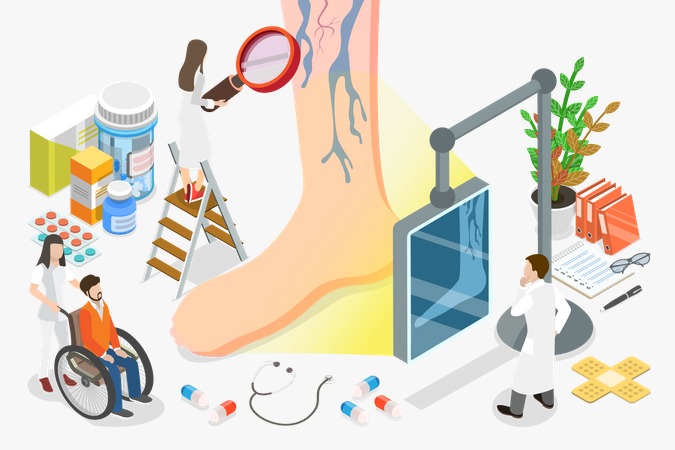


Varicose veins are enlarged, swollen, and twisted veins that typically appear blue or dark purple in color. They often occur in the legs and are caused by weakened or damaged vein walls and valves. Varicose veins occur when the valves within the veins weaken or become damaged, leading to blood pooling and causing the veins to swell and become enlarged. While they can develop anywhere in the body, they most commonly appear in the legs due to the increased pressure on the veins from standing and walking. Despite the prevalence of varicose veins, there are still misconceptions surrounding this condition. Many individuals believe it is simply a cosmetic issue, dismissing the discomfort and pain it can cause. However, varicose veins can lead to more severe complications such as ulcers, blood clots, and skin changes if left untreated.
Several factors can contribute to the development of varicose veins, including:
Age: As people get older, the valves in their veins may weaken, increasing the risk of varicose veins.
Gender: Women are more likely to develop varicose veins than men, possibly due to hormonal changes during pregnancy, menstruation, and menopause.
Pregnancy: Pregnancy can increase pressure on the veins in the legs, leading to the development of varicose veins.
Family History: A family history of varicose veins increases the likelihood of developing them.
Obesity: Excess weight can put added pressure on the veins in the legs, contributing to the development of varicose veins.
Prolonged Standing or Sitting: Jobs or activities that involve long periods of standing or sitting can impair blood flow in the legs and increase the risk of varicose veins.
With each variation in weather, from the brisk chill of winter to the blooming warmth of spring, our bodies adapt accordingly. However, alongside these weather changes, there exists a less obvious but equally significant impact on our health—particularly on our cardiovascular systems. Just as the weather patterns evolve, so too do the risks of heart diseases fluctuate.
Varicose veins are not merely a cosmetic concern; they can significantly impact an individual’s quality of life, causing discomfort, pain, and even serious complications if left untreated.
Causes of Varicose Veins
Varicose Veins may form Whenever blood pressure increases inside your veins. This can happen due to age, pregnancy, and overweight. Furthermore, there is a misconception that varicose veins are solely a problem for the elderly. While age can be a contributing factor, varicose veins can affect individuals of any age, especially those with a family history of the condition, obesity, or who spend prolonged periods standing or sitting.
How is Interventional Radiology more effective for Varicose Veins?
This probe transmits laser energy to the affected vein. The heat from the laser kills the tissue in the varicose vein, causing the vein to close and eventually be reabsorbed by the body. It is also a low-cost procedure, with less tearing of the skin. The Procedure is furthermore, takes less time. With just the needle-like incision there would be no need for any wear and tear.
Raising awareness about varicose veins and encouraging individuals to seek treatment when necessary is essential. Fortunately, advancements in medical technology have provided various minimally invasive treatment options that offer effective and long-lasting results with minimal downtime.